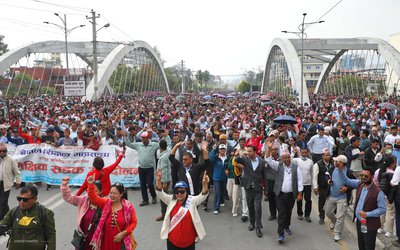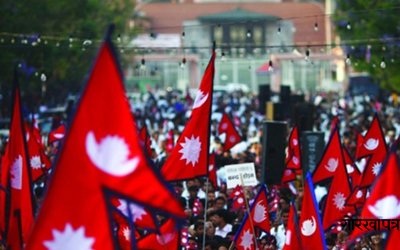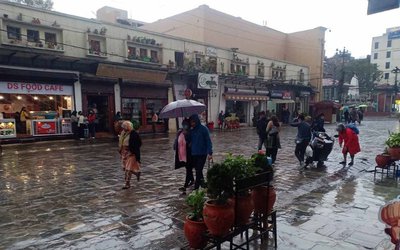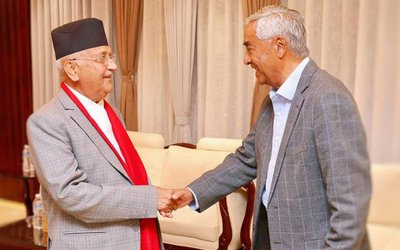The First Bite of Inflation
The steam rises in lazy curls from the bamboo basket, carrying with it the irresistible aroma of garlic, ginger, and spiced meat. You dip the plump dumpling in fiery tomato achar, take that first glorious bite, and—wait. One hundred thirty rupees? Just last year, this same plate of momos cost 100.
Welcome to the great Himalayan inflation mystery, where a war in Eastern Europe has come knocking on Kathmandu's street food stalls. The humble momo—Nepal's beloved culinary treasure—has become an unwilling casualty of global geopolitics.
Wheat: The Unlikely Domino
At the heart of this story lies a simple truth: Nepal runs on imported wheat. While the country grows rice and maize in abundance, 90% of its wheat comes from abroad—mostly via India. This became problematic when two countries most people here couldn't locate on a map—Ukraine and Russia—went to war in February 2022.
These nations supply 30% of the world's wheat. When conflict trapped 20 million tons of Ukrainian grain in Black Sea ports, and western sanctions disrupted Russian exports, the global price of wheat spiked by 40% (FAO, 2022). India—Nepal's primary wheat supplier—panicked and banned exports to protect its own stocks.
"Overnight, our flour costs jumped 30%," says Ram Shrestha, who has run a momo stall near Boudhanath Stupa for 15 years. "We either had to raise prices or use less flour per momo—and customers notice when the skin gets thicker."
The Perfect Storm of Costs
But wheat was just the beginning. Momo inflation came from three directions:
The Cooking Gas Crisis
The same war that disrupted wheat sent global oil prices soaring. Nepal's cooking gas (LPG) prices rose 50% in 2022 (Nepal Oil Corporation). For momo vendors who steam dozens of baskets daily, this was catastrophic.
"Before, one gas cylinder lasted me a week," says Sita Tamang in Patan. "Now I stretch it for ten days by steaming fewer momos at a time."
Meat and Veggie Inflation
- Chicken prices rose 18% (Nepal Livestock Department) due to pricier animal feed—Russia and Belarus were major fertiliser exporters.
- Vegetables became 12% more expensive (World Bank) due to transport fuel hikes.
- Even garlic and ginger for achar saw price jumps.
The Human Toll
At Kathmandu's Momo Association, president Rajiv Gurung keeps a grim ledger: "Pre-war, our average profit margin was 30%. Now? Maybe 15%. Some vendors are mixing more cabbage into fillings. Others are working longer hours just to break even."
A Global Story in Every Bite
This isn't just about dumplings. Nepal's momo crisis reveals three uncomfortable truths:
The Illusion of Isolation
In our hyper-globalised world, a tank battle in Donetsk can determine how much a student pays for snacks in Thamel.
The Fragility of Food Security
With no strategic grain reserves and reliance on a single import corridor (India), Nepal remains vulnerable to external shocks.
The Resilience of Street Vendors
Despite everything, momo sellers innovate—adjusting recipes, portion sizes, and operating hours to survive.
"Momo is not just food here," reflects anthropologist Dr. Aruna Uprety. "It's the food of migrants, students, office workers—a great equaliser. When momos become unaffordable, it hits at Nepal's social fabric."
The New Normal
As of 2024, prices have stabilised somewhat, but momos remain 20% pricier than pre-war levels. Some vendors now offer "mini momos" at old prices. Others quietly absorb losses.
"What can we do?" laughs Laxmi Rai, a vendor in Pokhara. "Nepalis won't stop eating momos. We'll just have to make peace with smaller profits—and hope NATO doesn't escalate the war."
References and Further Reading:
Data Sources:
- FAO (2022) - Global Food Price Index
- Nepal Rastra Bank - Inflation Reports 2022-23
- World Bank - Nepal Development Update 2023
Investigative Reports:
- "Flour Shortages Hit Momo Businesses" (The Kathmandu Post, 2022)
- "How Global Inflation is Changing Nepal's Street Food" (Himalayan Times, 2023)
Policy Perspectives:
- Food Security in Landlocked Developing Countries (UNESCAP, 2023)
- The Geopolitics of Wheat (Chatham House, 2022)
Momo Crisis Playlist: Songs to enjoy while pondering food inflation
- "Wheat for the People" - Tinariwen (Globalisation blues)
- "Gasolina" - Daddy Yankee (For the LPG price hikes)
- "Money for Nothing" - Dire Straits (Vendor struggles)
- "Under Pressure" - Queen & David Bowie (Momo sellers' anthem)
- "War" - Edwin Starr (The root cause)
- "Juni Aama" - Nepathya (Local flavor)
Last Word
The next time you bite into a juicy momo, remember—you're not just tasting minced meat and spices. You're sampling the inter-connectedness of our world, where war, trade, and climate ripple across borders to shape what's on your plate.
Now if you'll excuse me, I need to go overpay for some dumplings.
*Zakir Kibriais a writer and nicotine fugitive (once successfully smuggled a lighter through 3 continents). Entrepreneur | Chronicler of Entropy | Cognitive Dissident. Chasing next caffeine fix, immersive auditory haze, free falls. Collector of glances. “Some desires defy gravity.”Email: zk@krishikaaj.com
- The Silent Crossings: A Nepali Elegy for the Lost Souls of Fortress Europe
- Apr 19, 2025
- Digital Colonialism 2.0: How Global Platforms Redefine Truth in Nepal and Beyond
- Apr 10, 2025
- Trump’s Tariffs and the Dawn of Multipolarity: Implications for Nepal
- Apr 06, 2025
- “Mountains Of The Mind" – When Western Obsession Meets Himalayan Timelessness
- Apr 01, 2025
- Democracy as Disruption: A Rancièrean Reckoning in Nepal and South Asia
- Mar 24, 2025















